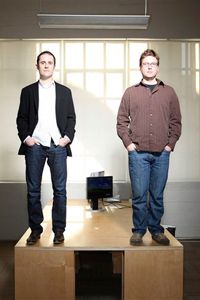Social networking sites seem to dominate the Web. How often do you find yourself updating your status on Facebook, sending out a tweet on Twitter or adding new images to your MySpace page? Many social networking sites allow users to create profiles for free. But have you ever wondered how these sites made enough money to support millions of users?
One way social networking sites manage to make money is through investments from venture capitalists. These investors are essentially making a bet that the site they're investing in will become popular and will eventually find a way to monetize that success. Getting in early can mean a huge payoff down the road. There are several examples of large corporations buying out Internet startup companies for millions -- or even billions -- of dollars.
Advertisement
Between the dot-com bubble burst in 2000 and the economic recession that began in late 2007, venture capitalism was booming. It was fairly common for entrepreneurs to pool money and invest in promising Internet companies. Without these investors, services like Twitter would have withered away under operational costs. But as the economic recession set in, venture capitalism began to slow down. People are still investing in promising companies, but they're a little more picky about their choices now.
The problem with depending upon venture capitalists is that as time goes on, you have to find ways to raise more capital. There's no steady stream of revenue coming in to fuel the company. You may raise millions of dollars during each round of financing, but that money eventually runs out. Oddly enough, it runs out even faster as demand increases and your service or site becomes more popular.
Eventually, social networking sites have to hope for one of two outcomes: Find a way to make money or convince a larger company to buy the site. Assuming the social networking site's founders want to maintain control over their creation, the only real choice is to find a way to make money. We'll look into a few of the more common methods in the next section.
Advertisement


